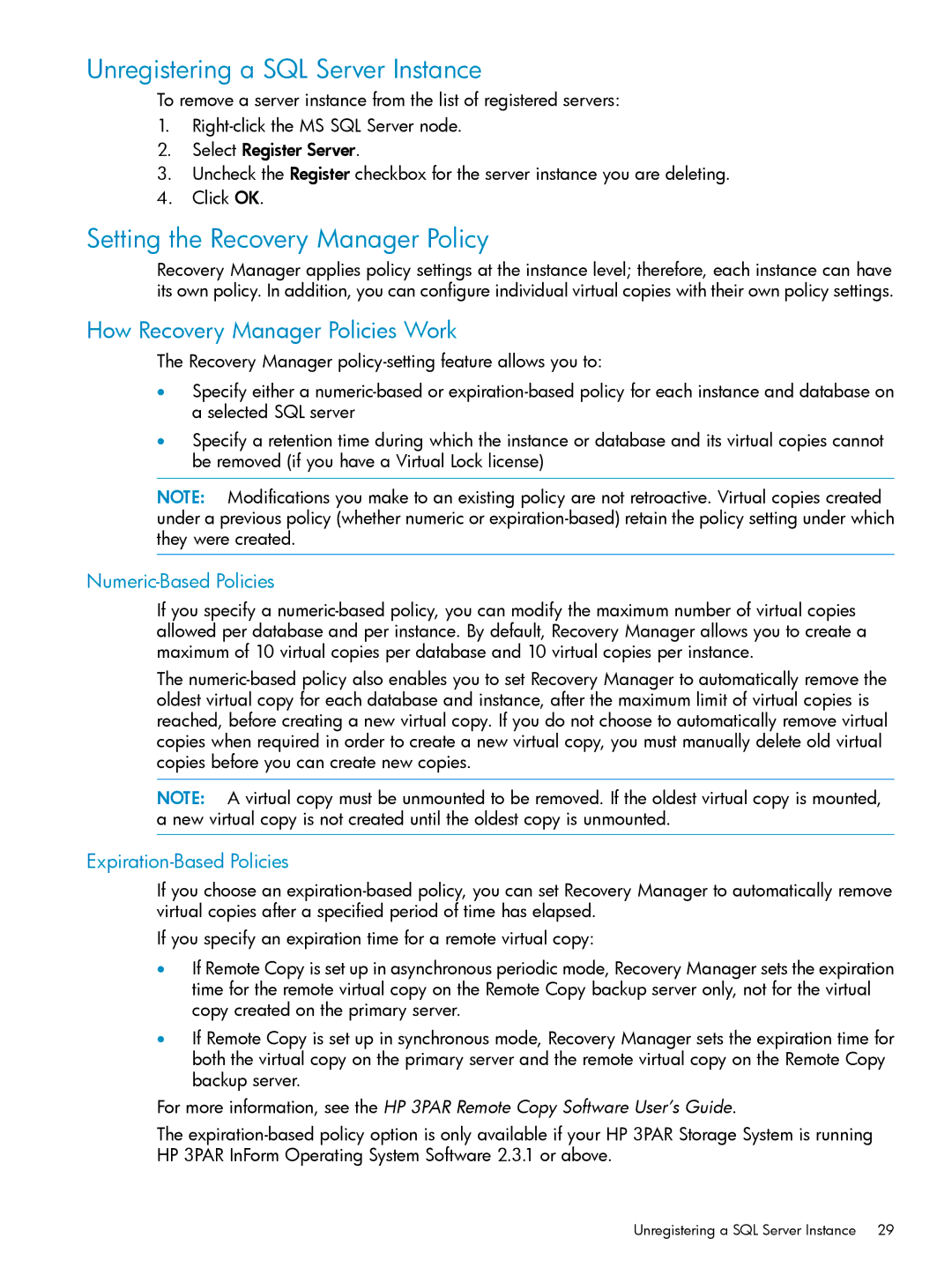
Unregistering a SQL Server Instance
To remove a server instance from the list of registered servers:
1.
2.Select Register Server.
3.Uncheck the Register checkbox for the server instance you are deleting.
4.Click OK.
Setting the Recovery Manager Policy
Recovery Manager applies policy settings at the instance level; therefore, each instance can have its own policy. In addition, you can configure individual virtual copies with their own policy settings.
How Recovery Manager Policies Work
The Recovery Manager
•Specify either a
•Specify a retention time during which the instance or database and its virtual copies cannot be removed (if you have a Virtual Lock license)
NOTE: Modifications you make to an existing policy are not retroactive. Virtual copies created under a previous policy (whether numeric or
Numeric-Based Policies
If you specify a
The
NOTE: A virtual copy must be unmounted to be removed. If the oldest virtual copy is mounted, a new virtual copy is not created until the oldest copy is unmounted.
Expiration-Based Policies
If you choose an
If you specify an expiration time for a remote virtual copy:
•If Remote Copy is set up in asynchronous periodic mode, Recovery Manager sets the expiration time for the remote virtual copy on the Remote Copy backup server only, not for the virtual copy created on the primary server.
•If Remote Copy is set up in synchronous mode, Recovery Manager sets the expiration time for both the virtual copy on the primary server and the remote virtual copy on the Remote Copy backup server.
For more information, see the HP 3PAR Remote Copy Software User’s Guide.
The
Unregistering a SQL Server Instance 29
